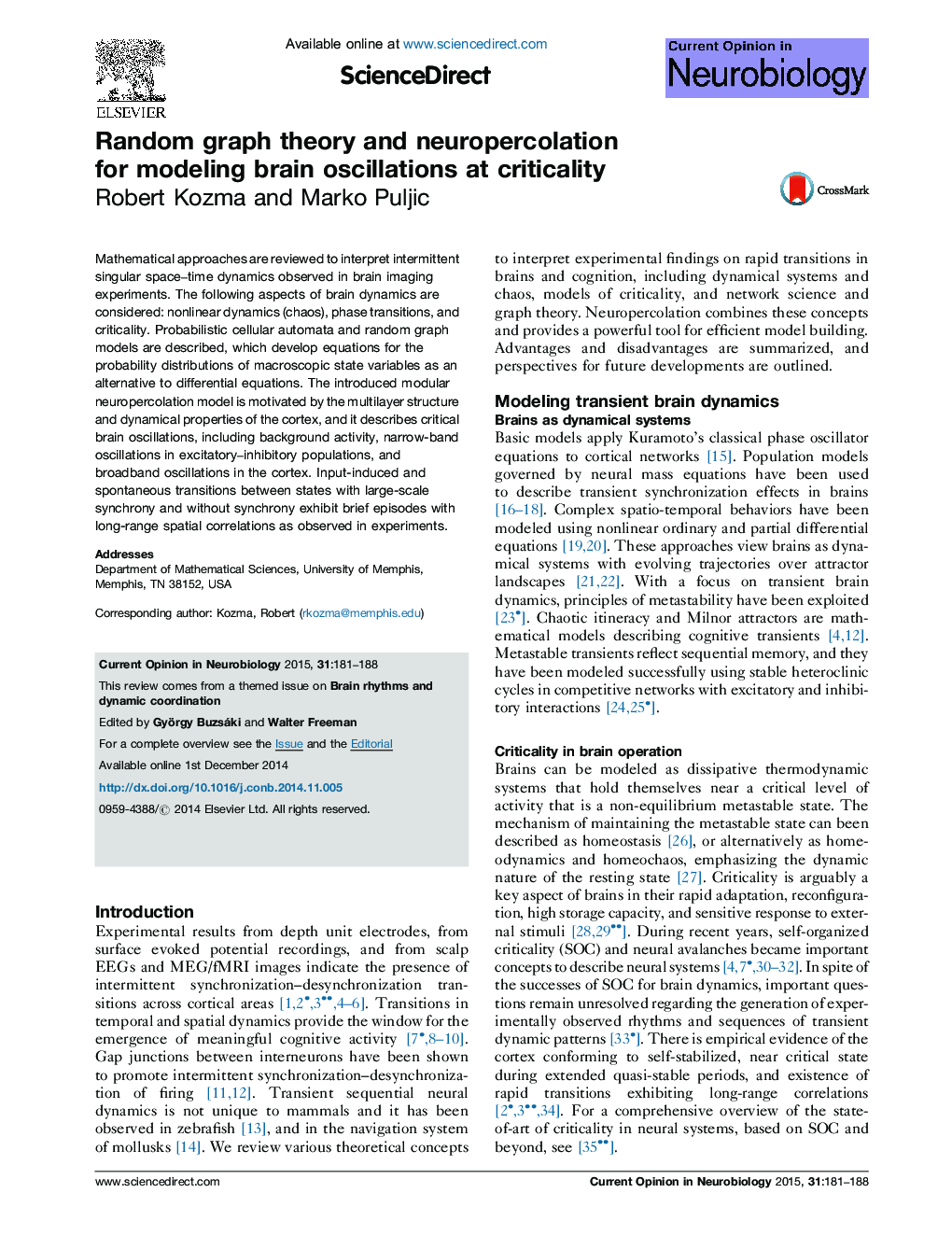| Article ID | Journal | Published Year | Pages | File Type |
|---|---|---|---|---|
| 6266238 | Current Opinion in Neurobiology | 2015 | 8 Pages |
â¢Transient brain dynamics as manifestation of a system at the edge of criticality.â¢Rapid phase transitions between metastable states with cognitive content.â¢Neuropercolation approach to criticality controlled by inhibition, rewiring, noise.â¢Collapse of broad-band oscillations to highly synchronous narrow-band dynamics.â¢Heavy-tail distributions at criticality resembling 'Dragon King' extreme events.
Mathematical approaches are reviewed to interpret intermittent singular space-time dynamics observed in brain imaging experiments. The following aspects of brain dynamics are considered: nonlinear dynamics (chaos), phase transitions, and criticality. Probabilistic cellular automata and random graph models are described, which develop equations for the probability distributions of macroscopic state variables as an alternative to differential equations. The introduced modular neuropercolation model is motivated by the multilayer structure and dynamical properties of the cortex, and it describes critical brain oscillations, including background activity, narrow-band oscillations in excitatory-inhibitory populations, and broadband oscillations in the cortex. Input-induced and spontaneous transitions between states with large-scale synchrony and without synchrony exhibit brief episodes with long-range spatial correlations as observed in experiments.
